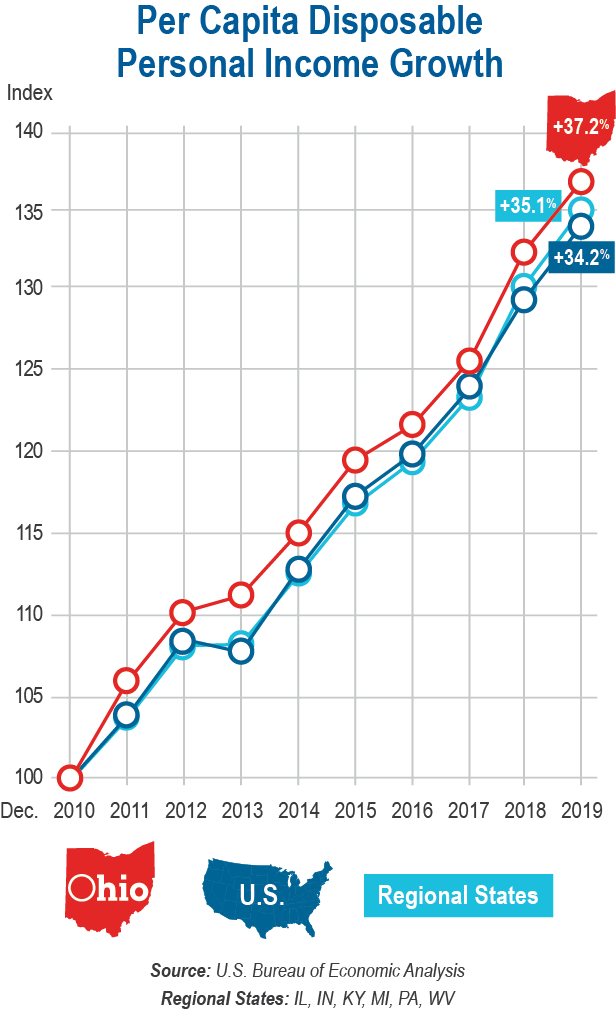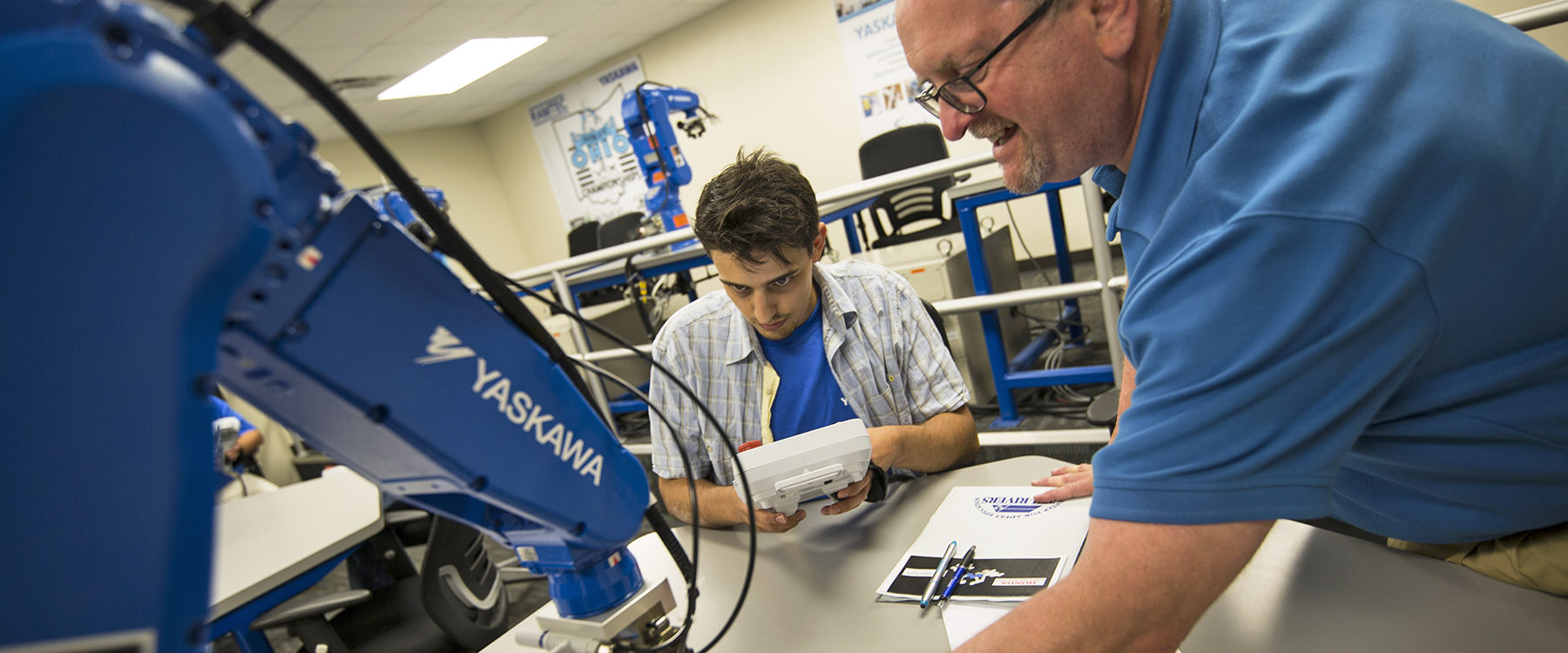Workforce
Ohio’s Greatest Asset Can Be Yours Too
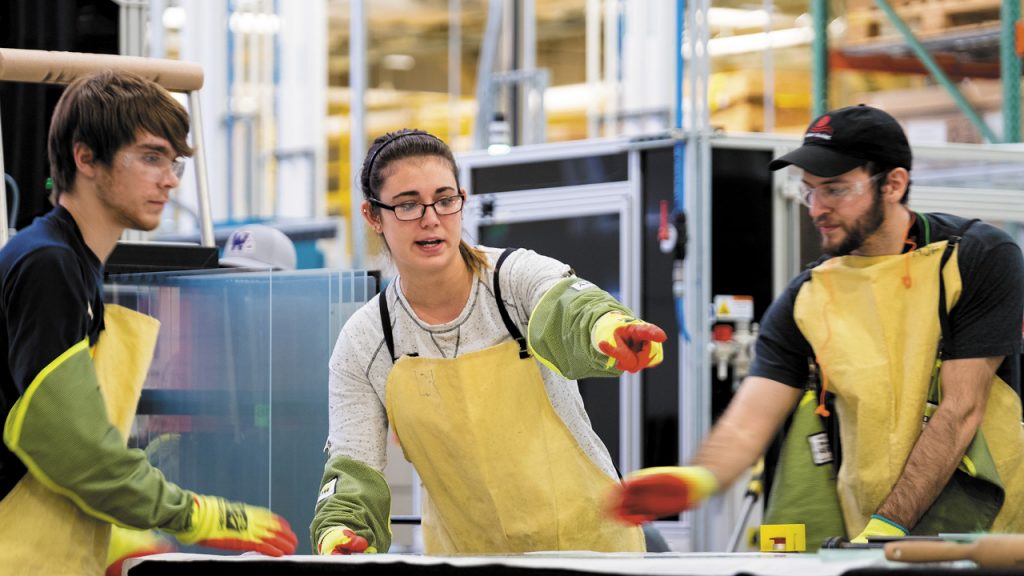
To compete successfully around the globe, access to top level talent is essential. Ohio’s world-class universities, community colleges, trade schools, and workforce training programs complement the Midwest work ethic of Ohioans, along with its unique partnerships and apprenticeship strategies. The resulting Ohio workforce is educated, committed, skilled and productive. Ohioans can meet the needs of a variety of employers, including advanced manufacturers, technology services firms and healthcare providers. Through Ohio’s talent pipeline, the workforce is able to meet the demands of today and is prepared for the needs of the future.
JobsOhio continually invests in the state’s workforce to address the skills gap in tech, life sciences and advanced manufacturing occupations and to increase credentials, education and innovation in these areas. JobsOhio introduced a broader, yet focused, strategy to increase production of in-demand talent. In early 2020, JobsOhio also announced a $1.5 million investment for existing manufacturing skill programs in six institutions, with a goal of increasing the number of workers with in-demand skills to power northwest Ohio manufacturers.
Ohio’s composite cost of living index was significantly lower than the national and regional average in 2020, and Ohio ranks #1 in Affordability under the US News Opportunity Rankings. Ohio is an innovative state with a stable economy and welcoming communities. Its workforce is dedicated and loyal, turning Ohio’s greatest asset into a company’s greatest asset when they choose to invest in Ohio. With an affordable cost of living and growing wages, Ohio is a place where people don’t have to make the choice between a successful and fulfilling professional life and a successful and fulfilling personal life.
Population and Workforce
- Total population: 11.80 million, the 7th largest in the U.S.
- Ohio ranked No. 10 in competitive labor environment
- Ohio is No. 8 in leading workforce development programs
Workforce Composition
Ohio is home to an abundant and industrious talent pool, from tech-savvy coders to computer numerically controlled (CNC) operators, from engineers and scientists to those in professional services and healthcare. JobsOhio focuses on industries that include advanced manufacturing, aerospace and aviation, automotive, energy and chemicals, financial services, food and agribusiness, healthcare, tech, logistics and distribution.
Workforce Trends
Various industries in Ohio have grown in the past ten years, with available workers in each respective industry.
Learn More
Healthcare
- Ohio’s healthcare sector has outpaced national employment growth for 2012-20, adding over 14,000 jobs – more than most states in the region.
- Bioscience education continues to thrive in our state. In 2018, 11,997 bioscience-related degrees and certificates were awarded to students in Ohio, an increase of 77% since BioOhio began tracking in 2006.
Energy and Chemicals
- Ohio schools granted 67 percent more annual degrees and certificates for chemistry, petroleum engineering, chemical engineering, and similar programs from 2010-19, second in the region.
- Total investment in Ohio’s resource rich shale energy sector surpassed $90 billion since tracking began in 2011, according to a Cleveland State University (CSU) study.
- While the energy sector nationally is reeling from the effects of the pandemic, Ohio’s past investments in shale and the petrochemical industry, and the abundance of talent, will ensure that the state is poised to capitalize on the resurgence of the industry.
Tech
- There was a 221 percent increase in annual degrees granted for computer engineering in Ohio from 2009-19, the highest in the Midwest.
- Ohio schools graduated 29 percent more students in computer and information sciences from 2007-19.
Advanced Manufacturing
- Ohio is No. 1 in the region with over 55,000 people employed in the state’s plastic and rubber manufacturing industry, representing the largest plastic and rubber talent pool in the U.S. Ohio is also No. 1 in plastic and rubber manufacturing in both the U.S. and the region.
- Ohio has the No. 3 largest manufacturing workforce in the U.S. with 655,123 jobs, comprising 5.4% of the total national manufacturing workforce.
- Ohio’s talent availability for 3D printing industry is 2.3 times higher than the U.S. average, the second highest in the Midwest.
Education and Training
Ohio’s workforce receives education and training from nationally recognized institutions that craft programs specifically for the needs of modern businesses.
- More than 175,000 students graduate from Ohio's higher education institutions annually.
- There are 53 Ohio Technical Centers that awarded almost 7,000 credentials, certificates or degrees for the 2018-2019 school year.
- Ohio has 11 universities or colleges certified by the National Security Agency as Centers of Academic Excellence in Cyber Defense and 2 schools certified in Cyber Operations.
- Four Ohio universities (Ohio State University, Case Western Reserve University, University of Akron and the University of Cincinnati) are among the top 100 in the world for patents issued in the United States to protect new inventions.
Strong Wage Growth Benefits Ohioans
Ask most executives why they choose Ohio, and they’ll tell you it is due to Ohio’s skilled and educated talent who possess the proverbial Midwest work ethic: the ingenuity to creatively solve problems and the perseverance to see a solution get implemented.
Learn More

The private sector workforce in Ohio, totaling 3.975 million (June 2020), continues to see incomes growing faster than the U.S. and region. Over the past decade, Ohio added more private sector jobs than any other state in the region, boasting a nearly 14 percent growth rate. Private sector wage growth in Ohio can be attributed to a number of factors, including growth of jobs in new and emerging sectors, such as white-collar jobs and a low unemployment rate.
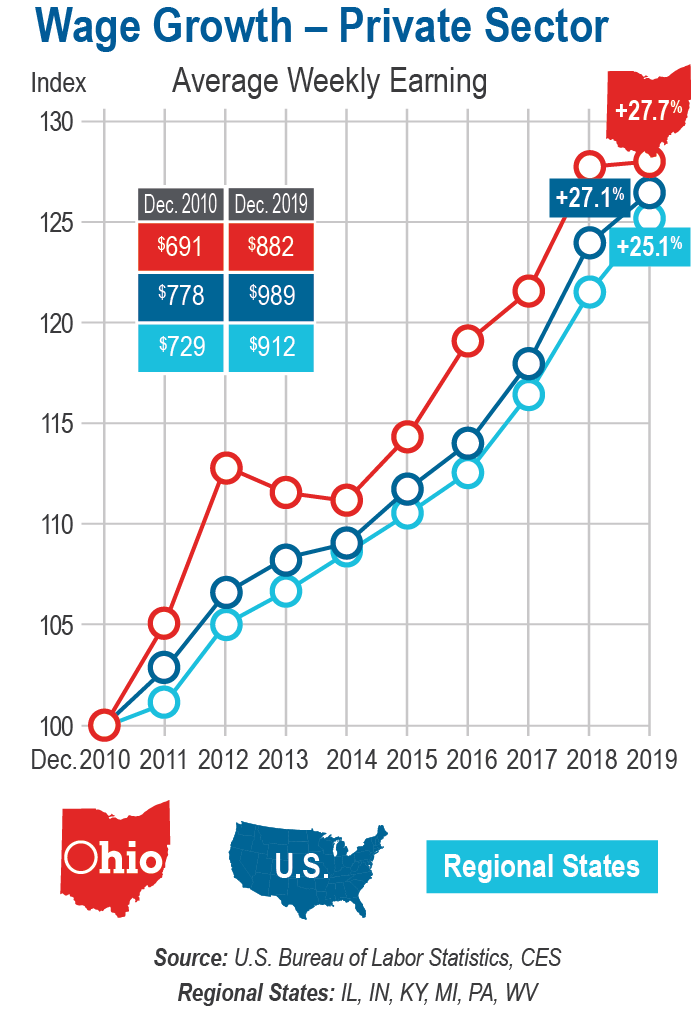
With a continued diversification of the economy including growth in technology, financial services and healthcare jobs as well as upskilling of the manufacturing workforce to support emerging technologies, wage growth is expected to see a continued uptick across the state of Ohio across industries.
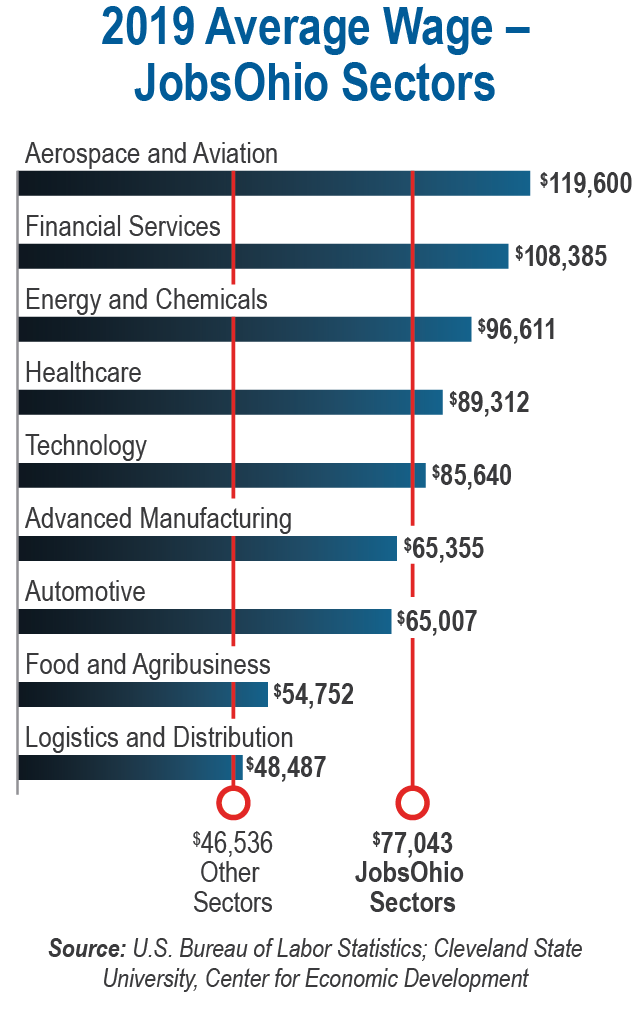
With wage growth comes a higher disposable income to benefit the greater Ohio economy.. The median household income in Ohio increased 27 percent from 2010-2018 which significantly outpaces many regional states. With the increase in median income comes a 41 percent increase in per capita disposable income in Ohio, putting the state significantly ahead of other midwestern states.
